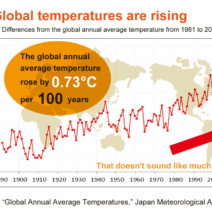The ocean, a vast and enigmatic body of water, covers over 70% of our planet’s surface. This enormous expanse plays an indispensable role in shaping our climate, acting as the planet’s primary engine for atmospheric processes. Understanding the intricacies of how the ocean influences climate shift is crucial, particularly as humanity stands at the precipice of pronounced environmental transformation. As we delve into this topic, we explore the multifaceted ways in which the ocean orchestrates climatic phenomena through currents, tides, and biological interactions.
At the core of oceanic influence is the phenomenon of ocean currents—mighty rivers of water that traverse the globe. These currents are propelled by wind, the rotation of the Earth, and differences in water density and temperature. The interaction between warm and cold currents creates a dynamic ballet that redistributes heat, impacting weather patterns across continents. The Gulf Stream, a prominent warm current originating in the Gulf of Mexico, exemplifies this effect, facilitating milder winters in Western Europe while simultaneously affecting precipitation patterns in the southeastern United States.
Contrastingly, cold currents, such as the California Current, bring cooler temperatures and can exacerbate aridity in coastal regions, thereby influencing local ecosystems. This complex interplay of currents serves not only to regulate temperature but also to mediate extreme weather events, showcasing the ocean’s ability to adaptively respond to climatic pressures.
With climate change burgeoning at an alarming rate, the stability of ocean currents is now under scrutiny. Increased glacial melt and increased freshwater inputs into the North Atlantic may disrupt these currents, leading to unforeseeable repercussions. Scientists are increasingly concerned about the prospect of a weakened Gulf Stream, which could herald dramatic shifts in climate for various regions, emphasizing the inextricable link between ocean stability and terrestrial climate.
Tides, dictated by the gravitational pull of the moon and sun, are another crucial oceanic influence on climate. While tides might seem like a predictable ebb and flow, they possess a more profound impact on coastal ecosystems and biodiversity than often acknowledged. This oscillatory dance not only governs the life cycles of numerous marine organisms but also affects nutrient cycling in tidal zones. Enhanced nutrient influx into coastal waters during high tides can lead to algal blooms, which, while sometimes beneficial, can also result in hypoxic conditions detrimental to marine life.
Moreover, the phenomenon of tidal forces can also impact sea level trends and, by extension, coastal climate vulnerability. As sea levels rise due to global warming, the frequency and intensity of tidal flooding will increase, prompting significant changes to coastal habitats and human settlements. The interplay of tides with these changing sea levels symbolizes a precarious balance, where the rhythm of the ocean becomes a harbinger of climatic challenges faced by coastal populations.
Beyond the physical forces at play, the ocean houses a wealth of biodiversity that contributes to climate regulation. Phytoplankton, microscopic marine plants, are responsible for approximately half of the world’s oxygen production and play a critical role in sequestering carbon dioxide. When they photosynthesize, they absorb CO2 from the atmosphere, thus contributing to a natural check on greenhouse gas concentrations. A decline in phytoplankton populations, due to rising temperatures and ocean acidification, could significantly disrupt this balance, showcasing how intricately linked oceanic health and atmospheric conditions truly are.
Furthermore, the condition of coral reefs—often dubbed the “rainforests of the sea”—serves as another crucial nexus between ocean and climate. Coral reefs provide habitat for diverse marine life and act as essential carbon sinks. However, with rising ocean temperatures and increased acidity, coral bleaching episodes have surged dramatically, threatening not only marine ecosystems but also the livelihoods of communities dependent on these ecosystems for sustenance and economic stability.
Another oft-overlooked aspect of ocean influence on climate lies in the realm of feedback loops. The melting of polar ice caps and glaciers reduces the Earth’s albedo, or reflectivity, exacerbating warming. This, in turn, prompts further ice melt, creating a vicious cycle of climatic escalation. As this cycle unravels, the intricate web of feedbacks presents a daunting challenge for scientists and policymakers who must untangle the implications of these rapid environmental shifts.
The ocean, vast and temperamental, serves as both a participant in and a witness to climate shift. Its currents and tides dictate not only weather patterns but also ecological niches and human livelihoods. As climate change intensifies, recognizing the ocean’s influence becomes imperative—not merely as an agent of change but as a powerful ally in the fight against environmental degradation. Protecting ocean health correlates directly with planetary health, and fostering an understanding of this relationship is essential for stimulating curiosity and encouraging stewardship of these vital waters.
In closing, while the complexities of ocean-climate interactions present daunting challenges, they also beckon us to explore the unseen connections that bind our existence to the vast deep. It is only through a unified approach—spanning scientific inquiry, community engagement, and policy reform—that we may chart a course toward sustainability, preserving the tides of change for future generations.


